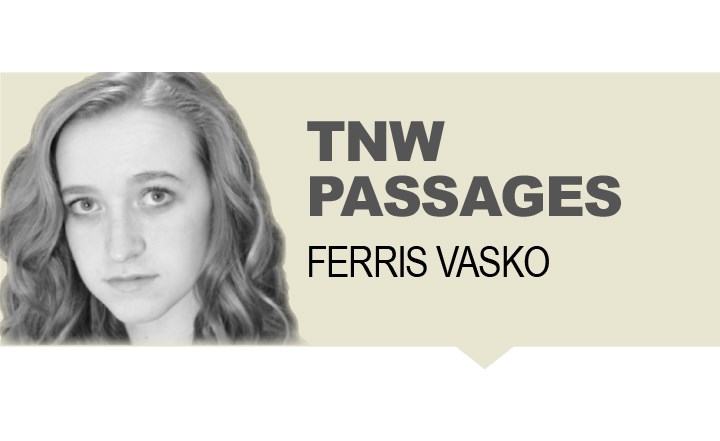When you think of theatre, what comes to mind?
Maybe you think of dramatic actors and elaborate costumes or immaculate sets and reminders to please-turn-your-cell-phone-off. But do you ever think back to plays you’ve seen and remember the books on a shelf in the background? Or the handwritten manuscript that a character holds?
Props are meant to support, or prop up, the characters and the action of the play, not necessarily be noticed themselves. They are the little details that tie the ends of the set together and pull the audience through the suspension of disbelief to fully immerse them in the world onstage.
The life of a prop is often a short one. From the perspective of a props maker, here is what happens: first, I read the script twice: once to understand the story and a second time to note all of the props that are mentioned. This step helps me get an idea of what time period the show is in, figure out what props I will probably need, and start to make a game plan.
I do some research by pulling photos from the time period of the show and make a visual collage. This helps me get into the world of the play and, therefore, choose props that best fit into that world. The set designer sends their props list, which often includes specific details (like if they need to be a specific colour, size, or shape), as well as photos for reference.
I get to spend time in our creepy, probably haunted warehouse! Yay! I go through our stock, pull anything we might be able to use and bring it to the theatre to try out in rehearsals. If we don’t have a prop already, I try and borrow or create it, but if that’s not possible I’ll rent or buy the things we need.
In my experience, making props means anything from converting jewelry boxes into gun cases, to putting period-appropriate covers on books and Kraft dinner boxes. It all depends on what the director and set designer need for the look and use of the prop. The humble glue gun is truly an unspoken hero of the theatre, both in this creation stage of prop making, as well as throughout the run of the show. If a prop breaks or wears out, I run in with my glue gun hot and ready to put things back together before the next performance.
Once the show closes, we bring anything we might want to use again back to the warehouse, return anything we borrowed or rented, and recycle or dispose of everything else. And, of course, the team never steals props ever. (I certainly do not currently have two boxes of 1940s Kraft dinner on my shelf because I wanted to keep my own little pieces of theatre magic). So, an object’s life as a prop is usually only a month.
My first show working on props was It’s a Wonderful Life: A Live Radio Play,adapted by Joe Landry, which TNW produced in 2017. Since it was a radio play, the actors read the script onstage as if they were performing on the radio and someone called a foley artist made the sounds of the show.
This play was one of my favourite examples of props as theatre magic, because every sound (except for dialogue, of course) was made using a specifically curated prop. Corn starch crunching made it seem as though characters were walking through the snow, and a cardboard tube filled with lentils imitated heavy rainfall.
As an introduction to life as a props maker, it was a unique challenge to help find and make props that not only sounded exactly like what the foley artist needed, but fit in our 1940s time period. That meant that nothing could be made out of plastic. It was a crazy three weeks but the show was fantastic and I hope you got to see it.
It’s always bittersweet when a show closes and I have to put away all of the props but I get to look forward to the next great show we’re doing and go through the process all over again!
- Ferris Vasko is the head of props and box office manager at Theatre NorthWest. Though she works behind the scenes, she enjoys being onstage, and has acted and sung in productions with Theatre NorthWest, Nechako Community Theatrics Society, UNBC Musical Productions Club, and the UNBC Drama Club. Ferris has worked and volunteered at several other arts organizations in town, including Coldsnap, the Prince George Symphony Orchestra, and Fraser Lyric Opera Society.



